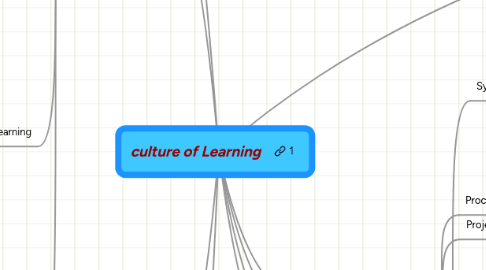
1. Economy
1.1. District Budget
1.1.1. Include staff and stakeholders in budget planning
1.1.1.1. Intellectual property
1.1.1.1.1. Know-how
1.1.1.1.2. Show-how
1.1.2. District salary scale should be set
1.2. Business
1.2.1. Budget proposals should be submitted to superintendent in the planning process
1.2.2. Per pupil funds should be calculated
1.3. Financial Officer
1.3.1. Be specific in budget funding availability
1.3.2. Prepare budget
1.3.3. Submit to superintendent and board
1.3.3.1. Advertise budget
1.4. School board approves budget
1.4.1. Implement budget as approved
1.4.2. Prepare monthly budget reports for board meetings
1.4.3. Implement budget as approved
1.5. Work with federal programs on consistently seeking grants to support instructional needs
1.5.1. Work with federal programs to enusre appropriate funding for professional development needs
1.5.1.1. Upgrade technology and seek resources to support educational programs for students
2. Structure
2.1. District Organizational Chart
2.1.1. Adopt by the School Board
2.1.2. Follow the chain of command
2.1.2.1. Post in all schools
2.1.2.2. Be consistent in following the chain of command
2.1.2.3. Refer staff or stakeholders to the appropriate source as needed
3. Knowledge
3.1. School Board
3.1.1. Board Policies
3.1.2. Procedural
3.1.2.1. Meet qualifications to serve
3.1.2.1.1. Host orderly monthly meetings
3.1.2.2. Practical knowledge
3.1.2.2.1. Attend School Board Trainings
3.1.2.2.2. Empower the Superintendent
3.1.2.2.3. Refrain from micromanagement
3.1.2.2.4. Demonstrate practical intelligence on laws and policy porcedures
3.1.2.3. Complete trainings by the Mississippi School Board's Association
3.1.2.4. Have a School Board Attorney
3.1.2.4.1. Seek advice from the School board Attorney and adhere to that advise
3.2. Information
3.2.1. Organize School Improvement Teams
3.2.2. Study data per school / per student / per teacher
3.2.3. Chart a performance analysis of each school
3.2.3.1. Determine areas of concern
3.3. Instructional content
3.3.1. Seek financial resorces and support
3.3.2. Seek research based strategies
3.3.3. Match strategies with needs
3.4. Learning
3.4.1. Learning taxonomies
3.4.1.1. District wide professional development plan
3.4.1.2. All areas of professional needs are addressed
3.4.1.3. Timelines are set for improvement expected in professional growth plans
3.4.2. Task analysis
3.4.2.1. Instructional performances
3.4.2.2. Student outcomes
3.4.2.3. School wide outcomes
3.4.2.4. District outcomes
3.4.3. encourage independent educational enhancement
3.4.4. Provide consistent training in the areas of lesson planning, instructional delivery, classroom managment and assessment
3.4.5. Share ideas and strategies in team meetings
3.5. Tools
3.5.1. Update technology
3.5.2. Provide technology training
3.5.3. Decision making
4. Monitor and make changes as needed
5. Highly qualified staff
5.1. Process
5.1.1. Human Resources Department
5.1.1.1. Having a recruiting plan in place
5.1.1.2. Be consistent in recruiting high quality staff
5.1.1.3. Provide support service for staff
5.1.1.4. Ensure that job descriptions are provided for all staff
5.1.2. study student teacher ratios
5.1.3. data analysis to study individual teacher performances
5.1.3.1. ensure teacher placements are aligned with the teacher's strengths
5.1.4. performance assessments
5.1.4.1. track performance
5.1.5. Hold all staff accountable for performing
5.1.5.1. observations
5.1.5.2. evaluations
5.2. Be creative
5.2.1. Organize and empower teams to restructure strategies and provide support
5.3. Enthusiasm
5.3.1. Povide motivational support
5.4. Innovation
5.4.1. Needs should be addressed with research-based strategies
5.4.2. Individualized growth strategies should be implemented
6. Highly qualified staff
6.1. Project management
6.1.1. Tools
6.1.1.1. mind map current performances and chart ideas for change
6.1.1.2. Decision mapping
6.2. Know how
6.2.1. identify needs
6.2.2. assess state test data
6.3. Problem solving
6.3.1. How to solve it
6.3.2. daily observations
6.4. Self-improvement
6.4.1. professional growth plans
7. Tools
7.1. state QDI assessment tool
7.1.1. No Child Left Behind guidelines
7.2. District policies
7.2.1. Mississippi Department of Education Accountability Model
8. Educational Leadership
8.1. Systems
8.1.1. Leadership Accountability
8.1.1.1. Monitor Performance
8.1.2. School
8.1.2.1. Ensure the vision, mission are goals are the school's focus in meeting the needs of children
8.1.2.2. Expectations should be clear to all stakeholders
8.1.3. Independent Education
8.1.3.1. Professional Growth Plans
8.1.3.2. Set Professional Goals
8.1.3.3. Target the district's vision and goals
8.1.4. Training
8.1.4.1. Engage in professional development identifed in growth plans and district plan
8.1.4.2. Demonstrate shared professional development in daily operations
8.2. Ethics
8.2.1. Enforce district policies
8.2.2. Demonstrate practices that are fail, firm and consistent
8.3. Communities
8.3.1. Organize an inviting parent center to enhance parental involvement
8.3.2. Build collaboration
8.3.2.1. Host community forums
8.3.2.2. Organize advisory teams to meet monthly with district administration
8.3.2.3. Include in decision making processes and value opinions
8.4. Celebrate progress
8.4.1. Parent of the Year
8.4.2. Teacher of the Year
8.4.3. Administrator of th Year
8.4.4. Other incentive recognition
8.5. Ego
8.5.1. Post the progress of the district in the community
8.5.2. Post district's vision, mission and goals in the local grocery stores with the manager's permission
8.5.3. Place extended effort in establishing school and district pride
